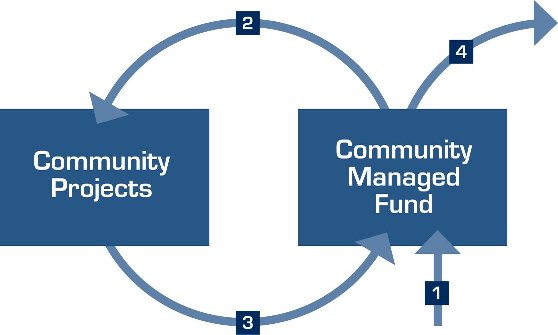
In pure economic terms a revolving fund is when a reserve of money (the fund) is used to lend to one or more borrowers. Over a given period of time, the borrower is expected to repay the original sum that restocks the fund. An additional sum can be charged to the borrower to act as a fee for providing the service.
The Orskov Foundation has used this principle to provide community groups with seed funding (1) to set up projects (2). In many cases this money has been used to help group members purchase livestock and instead of paying back money to the community fund, the farmers re pay their loan by providing some of the initial offspring back to the community group (3). In this way the community can use the fund to build up a "living bank". Animals can be sold when the community decides, to provide for microcredit loans or to pay directly for other essential goods and services (4). In some cases, when communities felt that they had sufficient animals to provide for their own needs they have donated animals to neighbouring communities to enable them to start their own community revolving fund.
In this way, from small beginnings, communities are empowered to decide how best to plan their own pathways out of poverty with locally relevant solutions.

